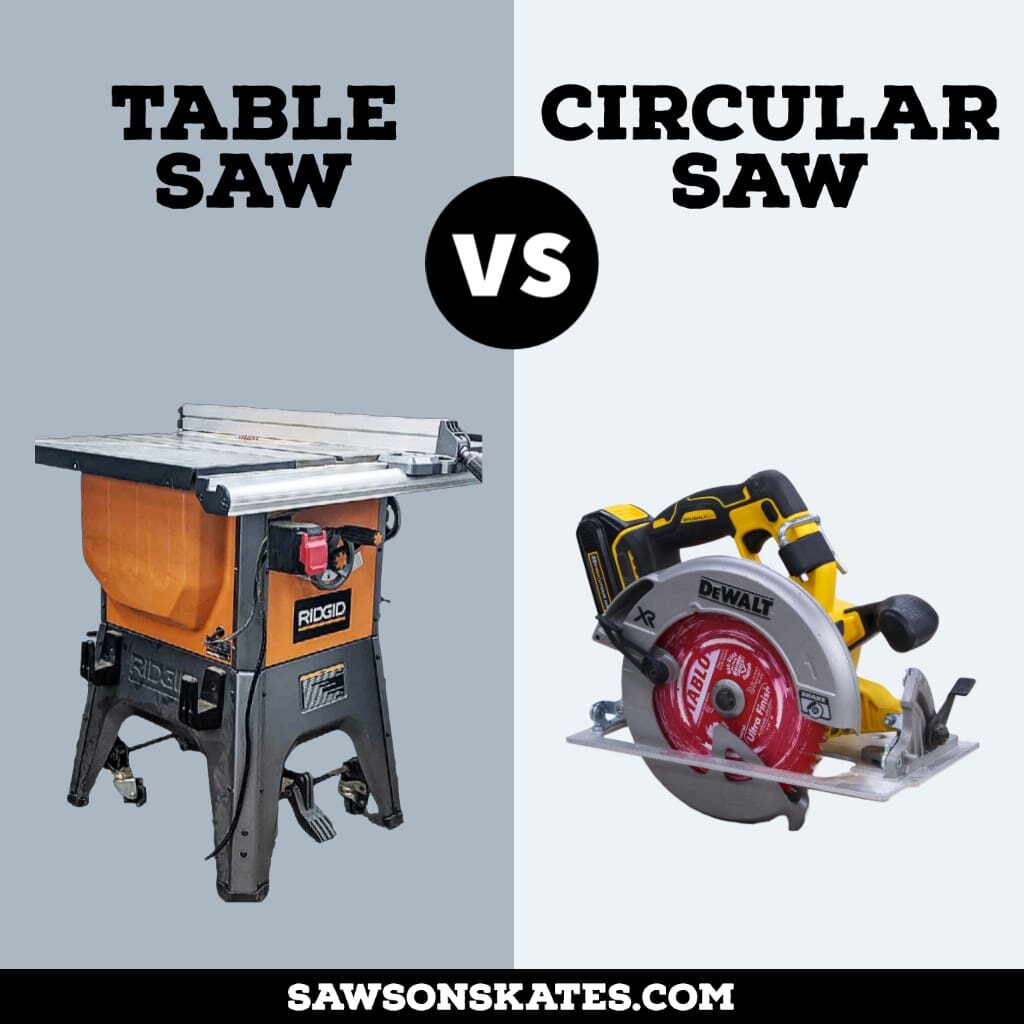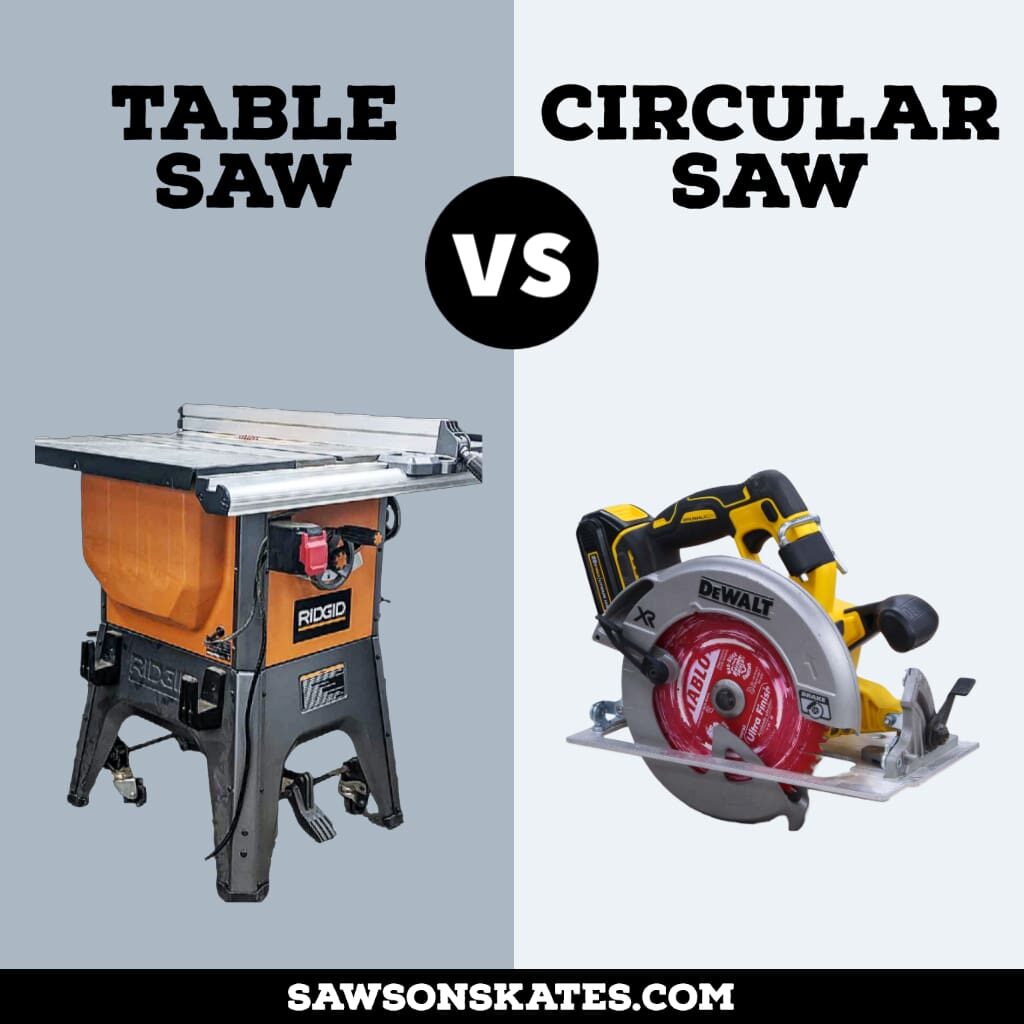Are you wondering what kind of table you need for a circular saw? Well, you’re in the right place! When it comes to using a circular saw, having the right table can make all the difference. In this article, we’ll explore the different types of tables available and help you choose the perfect one for your needs. So, let’s dive in and find the ideal table for your circular saw!
Now, you might be thinking, “Why do I need a specific table for my circular saw?” Great question! A dedicated table provides stability, support, and safety while you’re working with your circular saw. It ensures accurate cuts and prevents your workpiece from wobbling or shifting during the cutting process. So, whether you’re a seasoned woodworker or a DIY enthusiast, having the right table is essential for a smooth cutting experience.
From portable folding tables to adjustable stands and precision miter saw tables, there are various options available for your circular saw. But don’t worry, we’ll break down each type, explain their features, and help you understand which one suits your needs best. So, let’s get started and find the perfect table to unleash the full potential of your circular saw!

What Kind of Table Do I Need for a Circular Saw?
When it comes to using a circular saw, having the right table can make all the difference. A sturdy and well-designed table provides the necessary support and stability for smooth and accurate cuts. But with so many options available, it can be overwhelming to figure out what kind of table is best suited for your circular saw. In this article, we’ll explore the different types of tables, their features, and the factors to consider when choosing the perfect table for your circular saw.
The Importance of Choosing the Right Table
Before we dive into the various types of tables available for circular saws, it’s crucial to understand why choosing the right one is so important. The right table can significantly improve the performance and safety of your circular saw. It provides stability, support, and a secure working surface, ensuring precise cuts and reducing the risk of accidents or injuries. Additionally, a well-designed table can also enhance your efficiency and productivity by allowing for smoother and faster cutting operations. Now, let’s explore the different types of tables you should consider for your circular saw.
1. Portable Sawhorses and Workstands
Portable sawhorses and workstands are lightweight and easily transportable options that provide a stable surface for your circular saw. These tables are ideal for on-the-go projects or jobsites where mobility is key. They usually come with adjustable height and folding capabilities, making them easy to set up and store. Portable sawhorses and workstands are versatile, allowing you to use them for a range of other tasks besides using a circular saw, such as painting, sanding, or assembly work.
Benefits of Portable Sawhorses and Workstands:
- Portability and ease of transportation
- Adjustable height and folding capabilities
- Versatility for various tasks besides using a circular saw
- Space-saving and compact design for storage
Tips:
- Choose a portable sawhorse or workstand with a sturdy construction to ensure stability during cutting operations.
- Look for features such as clamps or support extensions that can enhance the functionality and safety of the table.
2. Sawhorses with Built-in Tabletops
Sawhorses with built-in tabletops provide an all-in-one solution for your circular saw needs. These tables consist of a pair of sawhorses with a sturdy tabletop secured on top. The advantage of this design is that you don’t have to worry about finding a separate surface to place your circular saw. The tabletop provides a level and sturdy base, while the sawhorses offer excellent stability and support. Additionally, many models come with adjustable legs, allowing you to set the desired height for optimal comfort and precision.
Benefits of Sawhorses with Built-in Tabletops:
- Stable and secure working surface
- Integrated design eliminates the need for a separate table
- Adjustable legs for customizable height
- Compact and easy to store
Tips:
- Consider the weight capacity of the table to ensure it can handle the load of your circular saw.
- Look for models with additional features like clamps or storage compartments for added convenience.
3. Standalone Table Saws
If you frequently work with a circular saw and require a dedicated and high-performance table, a standalone table saw is an excellent choice. Standalone table saws are heavy-duty tables specifically designed for the optimal use of circular saws. They offer maximum stability, precision, and cutting capacity. These tables often come with a built-in fence system, allowing for accurate and straight cuts. Standalone table saws are ideal for professional woodworkers, craftsmen, or enthusiasts who work on large and complex projects.
Benefits of Standalone Table Saws:
- Superior stability and cutting capacity
- Built-in fence system for precise cuts
- Expandable table size for handling larger workpieces
Tips:
- Consider the power and motor capacity of the standalone table saw to ensure it meets your project requirements.
- Look for additional features like dust collection systems or safety mechanisms for enhanced usability.
4. DIY Workbenches with Circular Saw Inserts
For those who enjoy DIY projects and want an affordable and customizable solution, a DIY workbench with a circular saw insert can be an excellent option. A DIY workbench allows you to build a table tailored to your specific needs and preferences. By incorporating a circular saw insert, you can transform your workbench into a functional cutting station. This option requires some craftsmanship and basic woodworking skills, but it offers great flexibility and cost savings.
Benefits of DIY Workbenches with Circular Saw Inserts:
- Customizable design to suit your preferences
- Cost-effective solution
- Opportunity for personalizing the table with added features
Tips:
- Take accurate measurements and plan the layout of the workbench to ensure a precise fit for the circular saw insert.
- Use sturdy materials and secure the circular saw insert properly to ensure stability and safety.
5. Features to Consider when Choosing a Table
Now that we’ve explored the different types of tables for circular saws, let’s discuss some important features to consider when making your selection:
- Size: Ensure the table provides enough space to accommodate your workpieces comfortably.
- Stability: Look for tables with a strong and sturdy construction to ensure stability during cutting operations.
- Adjustability: Consider tables with adjustable height or angle features for increased versatility and comfort.
- Portability: If you need to move your table frequently, opt for portable options that are lightweight and easy to transport.
- Additional Features: Some tables come with built-in clamps, storage compartments, or dust collection systems, which can enhance your workflow and convenience.
Conclusion
Choosing the right table for your circular saw is essential for achieving precise and safe cuts. Consider the type of projects you typically work on, your workspace constraints, and your specific needs when deciding which table is best for you. Whether you opt for a portable sawhorse, a sawhorse with built-in tabletop, a standalone table saw, or a DIY workbench with a circular saw insert, selecting a table that meets your requirements will significantly enhance your woodworking experience. Remember to prioritize stability, adjustability, and size when making your decision. Happy cutting!
Key Takeaways: What Kind of Table Do I Need for a Circular Saw?
- A sturdy workbench or table is essential for using a circular saw.
- Make sure the table is large enough to support the material you’re cutting.
- Look for a table with adjustable supports to accommodate different saw sizes.
- An integrated fence or guide system can help with accurate cuts.
- Consider a table with built-in dust collection for cleaner and safer working conditions.
Frequently Asked Questions
Trying to find the right table for your circular saw? Look no further! We’ve compiled some common questions to help you choose the perfect table for your needs.
1. How do I determine the right table size for my circular saw?
When choosing a table for your circular saw, consider the size of your saw’s base plate. Measure the length and width of the plate to find a table that accommodates it comfortably. Additionally, think about the types of materials you’ll be cutting. Larger materials may require a larger table size to provide adequate support.
Remember to also consider your workspace and storage limitations. Ensure the table you choose fits your available space without compromising functionality or creating obstacles in your workshop.
2. Do I need a portable or stationary table for my circular saw?
It depends on your specific needs and preferences. If you frequently work on different job sites or need to transport your circular saw, a portable table is a great choice. Portable tables are lightweight, foldable, and designed for easy transportation, making them ideal for contractors or DIY enthusiasts on the go.
On the other hand, if you have a dedicated workshop and don’t require portability, a stationary table offers greater stability and often comes with additional features, such as built-in extensions or storage options. Consider your work environment and mobility requirements when deciding between a portable or stationary table.
3. What features should I look for in a table for my circular saw?
When shopping for a table for your circular saw, there are a few key features to consider. Look for a table with a sturdy and durable construction, such as one made of heavy-duty steel or aluminum, to ensure it can withstand the demands of your projects.
Other important features include adjustable legs for leveling on uneven surfaces, a reliable fence system for accurate cuts, and a miter gauge for angled cuts. Some tables also offer storage compartments or accessory hooks for added convenience. Prioritize the features that align with your specific needs and woodworking goals.
4. Can I use any type of table for my circular saw?
While you may be tempted to use any table for your circular saw, it’s essential to choose a table specifically designed for sawing applications. Circular saw tables are designed with features that ensure safety, stability, and functionality while operating a circular saw.
Using the wrong table can jeopardize your safety and compromise the quality of your work. Circular saw tables are built to withstand the power and vibration of the saw, providing a stable surface for precise cuts. Invest in a table designed for use with a circular saw to achieve optimal results.
5. How can I ensure proper safety when using a table for my circular saw?
Safety is paramount when working with a circular saw and a table. Start by wearing protective gear, including safety glasses, ear protection, and appropriate clothing. Read and follow the manufacturer’s instructions for both the saw and the table.
Always ensure the table is stable and securely set up before using the circular saw. Use clamps to secure your workpiece and prevent it from moving during cutting. Pay attention to blade guards and anti-kickback features on both the saw and the table to minimize the risk of accidents. Regularly inspect and maintain your equipment to ensure optimal performance and safety.

Summary
To choose the right table for your circular saw, consider these key points:
First, make sure the table is sturdy and flat to give you a stable work surface. Look for a table with a smooth, durable material like plywood or MDF. Second, the table should have the right dimensions to accommodate your saw. Measure the size of your circular saw and choose a table that is large enough to hold it securely. Lastly, consider the features you need. If you want to make angled cuts, look for a table with adjustable angles. If you need extra support for long pieces of wood, look for a table with extensions or supports. Remember, choosing the right table will help you work safely and efficiently with your circular saw.
